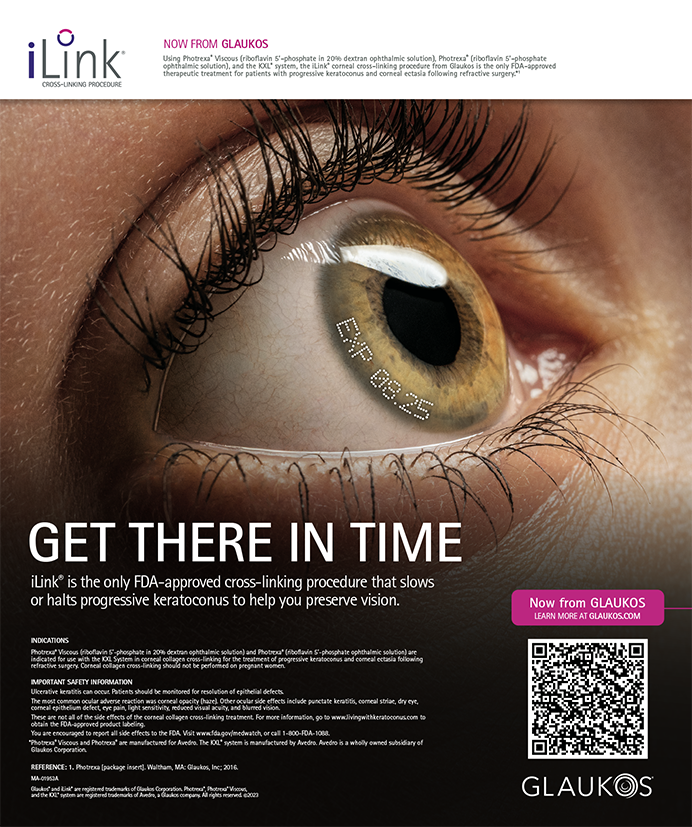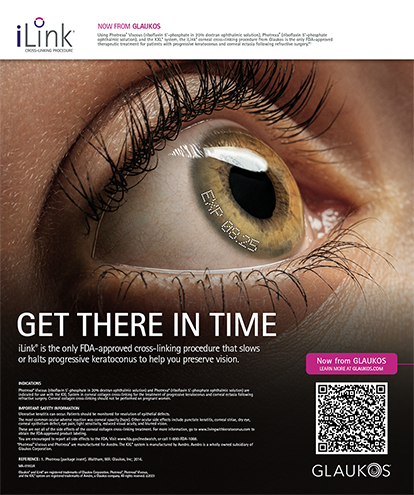Epidemiology
Using the World Health Organization's (WHO; Geneva, Switzerland) definition of blindness,1 it is estimated that there are currently 45 million people worldwide who are bilaterally blind, of which 6 to 8 million are blind due to corneal disease. In some areas of Africa, nearly 90% of the total blindness is due to corneal pathology.2 The prevalence of corneal disease varies from country to country and even from one population to another depending on many factors, such as the availability and general standards of eye care.3
In India, there are approximately 6.8 million people who have corneal blindness with vision less than 6/60 in at least one eye, and of these, about 1 million have bilateral corneal blindness.4 If the present trend continues, it is expected that the number of corneally blind individuals in India will increase to 8.4 million in 2010 and 10.6 million by 2020.5
Etiology
Although cataract is responsible for nearly 20 million of the 45 million blind people in the world, the next major cause is trachoma, which is responsible for blindness in 4.9 million people, mainly due to corneal scarring and vascularization. Ocular trauma and corneal ulceration are also significant causes of corneal blindness and may be responsible for 1.5 to 2.0 million new cases of uniocular blindness every year. Infectious conditions such as trachoma and corneal ulcer are common in the developing world, whereas noninfectious entities like corneal dystrophies and pseudophakic bullous keratopathy are more common causes of corneal blindness in developed countries.6-9
Trachoma
Trachoma is presently the world's leading preventable and infectious cause of blindness and the foremost cause of ocular morbidity.10 At present, there are 146 million people worldwide with trachoma; 10 million suffer from trichiasis and need surgery to prevent corneal blindness, and another 4.9 million are totally blind from trachomatous corneal scarring.4,11
Infectious keratitis
Infectious keratitis is one of the most common causes of ocular morbidity in the developing world (Figure 1). Most of these ulcers follow minor agricultural injuries (farming related). Although herpes virus is the most common cause of corneal ulcer in developed countries, bacterial and fungal infections are more common in developing countries. Gonzales et al found that the annual incidence of corneal ulceration in Madurai District in South India was 113 per 100,000 people,12 10 times the annual incidence of 11 per 100,000 reported from Olmsted County, Minnesota, in the US.13 By applying the 1993 corneal ulcer incidence rate in Madurai District to all of India, approximately 840,000 people develop corneal ulcers per year. This figure is 30 times the number of corneal ulcers seen in the US.12 The rampant and unjustified use of topical steroids in cases of red eye leading to corneal superinfection14 is an important factor for the high prevalence of corneal blindness in developing countries.
Ocular trauma
Ocular trauma has been reported to be the most important cause of the unilateral loss of vision in developing countries, and up to 5% of all bilateral blindness has been attributed to direct ocular trauma.15 Corneal and corneoscleral perforation and subsequent scarring due to ocular trauma may result in a variable amount of blindness.
Traditional eye medicines
The use of traditional eye medicines (eg, dried plant materials crushed into powder and dissolved in an aqueous medium; animal/human products such as breast milk, saliva, urine, etc.) is an important risk factor for corneal ulceration and blindness in many developing countries. It has been reported that 26% of childhood blindness in Malawi was associated with the use of traditional eye medicines, and 25% of corneal ulcers in the United Republic of Tanzania were associated with their use.17
Corneal dystrophies
Corneal dystrophies and bullous keratopathy represent other major causes of corneal blindness and are more significant in the developed world. In children, the causes of corneal blindness include keratomalacia18 due to vitamin A deficiency, ophthalmia neonatorum, accidental ocular trauma19 that may be mechanical (Figure 2) or chemical20 in nature, and less frequently, ocular diseases such as herpes simplex virus infections and vernal keratoconjunctivitis.21
Strategies to reduce corneal blindness
Preventative
Public health prevention programs are the most cost-effective means of decreasing the global burden of corneal blindness, because it is difficult to treat corneal blindness once it has occurred. The prompt diagnosis and appropriate treatment of corneal ulceration and the easy availability of antibiotics and antifungals, even in rural areas, should be the aim of community health programs. The failure to implement standard management protocol for infectious keratitis at first contact is a major factor contributing to ocular morbidity in developing countries.22
Hygiene
Ocular and personal hygiene plays an important role in reducing the prevalence of preventable corneal blindness. The SAFE strategy of prevention of trachoma blindness includes Surgery for trichiasis, Antibiotic treatment of clinically active chlamydial infection, the promotion of Facial cleanliness, and the improvement of Environmental conditions.23
Protective
Safety in workplaces has to be improved to reduce trauma causing corneal blindness. The use of protective devices and headgear for appropriate eye protection for people performing high-risk industrial work as well as agricultural labor can reduce the risk of corneal injuries.
Educational
Educating ophthalmologists at primary health centers and district hospitals regarding the avoidance of injudicious use of steroids in red eye can help prevent the occurrence of corneal blindness. Properly educating traditional medicine users and eliciting their cooperation in directing patients to appropriate healthcare facilities is essential in preventing complications that lead to blindness from the use of traditional medicines. Also, parents' awareness in preventing children from playing with sharp objects,19 firecrackers, and lime packets20 might be helpful. Prevention programs in children include widespread immunizations, the regular distribution of high-dose vitamin A capsules to children at risk, prophylaxis to reduce ophthalmia neonatorum,24 nutritional education for families, and dietary fortification for populations with poor nutrition.
Curative
Once a corneal scar develops, surgical management remains the only option for visual rehabilitation. Corneal transplantation is the definitive treatment for a corneal scar. However, only 40% of bilateral corneal blindness is treatable.25 The pathology for corneal disease is the main determinant of the success of keratoplasty. Although success rates for corneal transplantation surgery are high in the developed world, they are very low in developing countries (46.5%).26
Adding to the existing prevalence of corneal blindness in developing countries is the high rate of failed corneal grafts as well as the low availability of good-quality donor corneas. In India, nearly 3.5 million good-quality donor corneas are required to restore vision in all the eyes that can be treated with keratoplasty. However, only approximately 20,000 corneas or eyes are collected annually, while every year, approximately 40,000 new cases of corneal blindness are added to the existing backlog, creating a huge disparity between demand and supply. Thus, attempts to reduce the load of corneal blindness by corneal transplantation surgery are not optimally successful in developing countries.
In terms of alternatives to corneal transplantation, optical sector iridectomy in cases of corneal opacities is a simple and safe procedure that can improve visual outcomes and provide ambulatory vision to patients, particularly in eyes with poor prognosis for penetrating keratoplasty.27
Conclusion
Corneal blindness can result from a wide variety of causes, depending upon the community and strata of the population. Prompt measures to prevent and appropriately manage the clinical condition can limit any associated disability. As the majority of corneal blindness is avoidable, health-promotion strategies have to be developed and implemented to raise awareness about the causes and prevention of corneal blindness, particularly in developing countries. n
Rasik B. Vajpayee, MBBS, MS, FRCS(Ed), is Professor of Ophthalmology at the Rajendra Prasad Centre for Ophthalmic Sciences in the All India Institute of Medical Sciences in New Delhi, India. Dr. Vajpayee may be reached at +91-11-26593192; rasikvajpayee@rediffmail.com.
Rajesh Sinha, MD, FRCS, is Senior Research Associate of Ophthalmology at the Rajendra Prasad Centre for Ophthalmic Sciences in the All India Institute of Medical Sciences in New Delhi, India. Dr. Sinha may be reached at +91-11-26593192; sinharaj1@rediffmail.com.
Namrata Sharma, MD, is Assistant Professor of Ophthalmology at the Rajendra Prasad Centre for Ophthalmic Sciences in the All India Institute of Medical Sciences in New Delhi, India. Dr. Sharma may be reached at +91-11-26593144; namrata103@hotmail.com.
1. The prevention of blindness: report of a WHO Study Group. Geneva, World Health Organization, 1973:10-11 (WHO Technical Report Series, No. 518).
2. Schwartz EC, Huss R, Hopkins A, et al. Blindness and visual impairment in a region epidemic for onchocerciasis in the Central African Republic. Br J Ophthalmol. 1997;81:443-447.
3. Smith GTH, Taylor HR. Epidemiology of corneal blindness in developing countries. Ref Corneal Surg. 1991;7:436-439.
4. Global initiative for the elimination of avoidable blindness. Geneva, World Health Organization, 1997 (unpublished document WHO/PBL/97.61/Rev 1).
5. Lim AS. Mass blindness has shifted from infection (onchocerciasis, trachoma, corneal ulcers) to cataract. Ophthalmologica. 1997;211:270.
6. Cosar CB, Sridhar MS, Cohen EJ, et al. Indications for penetrating keratoplasty and associated procedures, 1996-2000. Cornea. 2002;21:2:148-151.
7. Edwards M, Clover GM, Brookes N, et al. Indications for corneal transplantation in New Zealand: 1991-1999. Cornea. 2002;21:2:152-155.
8. Dada T, Sharma N, Vajpayee RB. Indications for pediatric keratoplasty in India. Cornea. 1999;18:3:296-298.
9. Gupta V, Dada T, Pangtey M, Vajpayee RB. Indications for lamellar keratoplasty in India. Cornea. 2001;20:4:398-399.
10. Taylor KI, Taylor HR. Distribution of azithromycin for the treatment of trachoma [commentary]. Br J Ophthalmol. 1999;83:134-135.
11. Future approaches to trachoma control: report of a global scientific meeting, Geneva, 17-20 June 1996. Geneva, World Health Organization, 1997 (unpublished data).
12. Gonzales CA, Srinivasan M, Whitcher JP, Smolin G. Incidence of corneal ulceration in Madurai District, South India. Ophthalmic Epidemiology. 1996;3:159-166.
13. Erie JC, Nevitt MP, Hodge DO, Ballard DJ. Incidence of ulcerative keratitis in a defined population from 1950 through 1988. Arch Ophthalmol. 1993;111:1665-1671.
14. Vajpayee RB, Sharma N, Chand M, et al. Corneal superinfection in acute hemorrhagic conjunctivitis. Cornea. 1998;17:6:614-617.
15. Thylefors B. Epidemiological patterns of ocular trauma. Aust N Z J Ophthalmol. 1992;20:95-98.
16. Chirambo M, Ben Ezra D. Causes of blindness among students in blind school institutions in a developing country. Br J Ophthalmol. 1976;60:6665-6668.
17. Yorston D, Foster A. Traditional eye medicines and corneal ulceration in Tanzania. J Trop Med Hyg. 1994;97:211-214.
18. Vajpayee RB, Vanathi M, Tandon R, et al. Keratoplasty for keratomalacia in preschool children. Br J Ophthalmol. 2003;87:5:538-542.
19. Saxena R, Sinha R, Purohit A, et al. Pattern of pediatric ocular trauma in India. Indian J Pediatr. 2002;69:10:863-867.
20. Agarwal T, Vajpayee R. A warning about the dangers of chuna packets. Lancet. 2003 28;361:9376:2247.
21. Tabbara KF. Ocular complications of vernal keratoconjunctivitis. Can J Ophthalmol. 1999;34:88-92.
22. Vajpayee RB, Dada T, Saxena R, et al. Study of the first contact management profile of cases of infectious keratitis: a hospital-based study. Cornea. 2000;19:1:52-56.
23. Francis V, Turner V. Achieving community support for trachoma control. A guide for district health work. Geneva, World Health Organization, 1993 (unpublished document WHO/PBL/93.36).
24. Isenberg SJ, Apt L, Wood M. A controlled trial of povidone-iodine as prophylaxis against ophthalmia neonatorum. N Engl J Med. 1995;332:562-566.
25. Dandona L, Dandona R, Naduvilath TJ, et al. Is current eye-care-policy focus almost exclusively on cataract adequate to deal with blindness in India? Lancet. 1998;351:1312-1316.
26. Dandona L, Naduvilath TJ, Janarthanan M, et al. Survival analysis and visual outcome in a large series of corneal transplants in India. Br J Ophthalmol. 1997;81:726–731.
27. Vajpayee RB, Sharma N, Dada T, Pushker N. Optical sector iridectomy in corneal opacities. Cornea. 1999;18:3:262-264.


